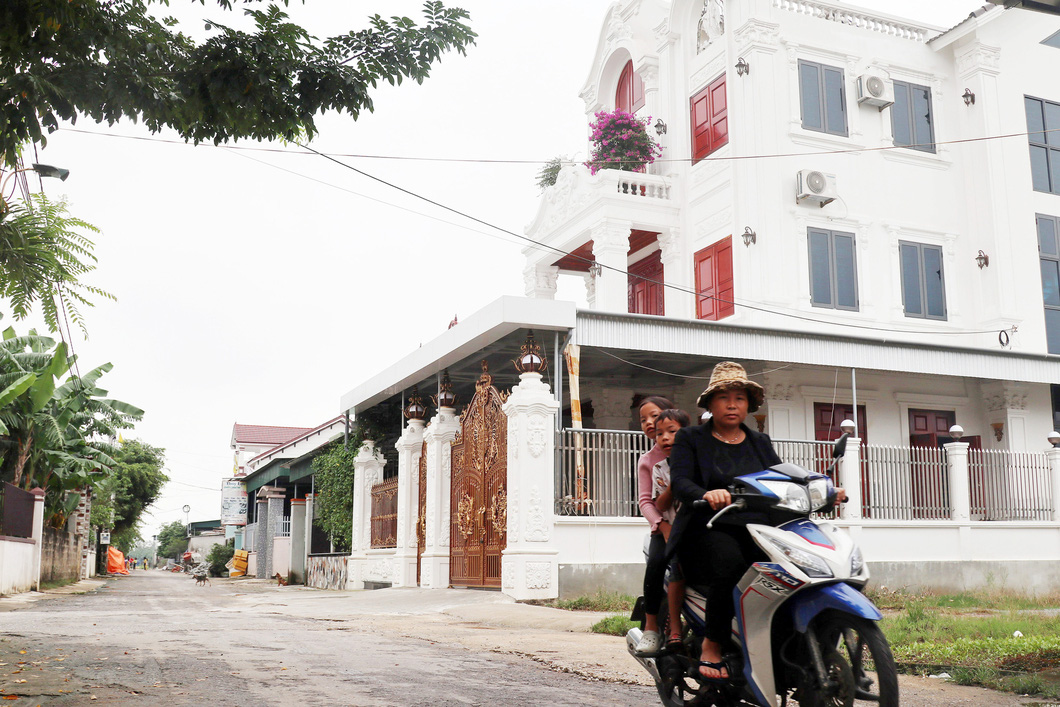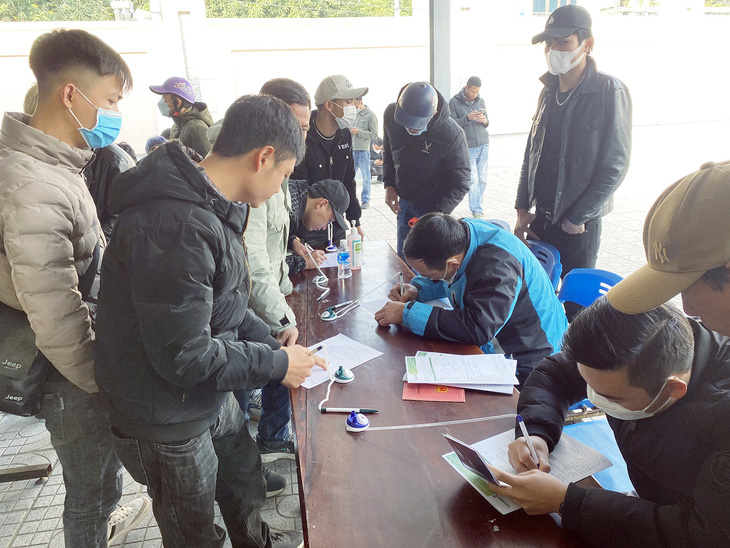More than 37,900 Vietnamese laborers went abroad for work in the first quarter of this year, meeting 34.48 percent of the full-year forecast and surging 15-fold year-on-year.
Of the total, nearly 17,700 laborers traveled to Japan, over 18,000 went to Taiwan, and the remainder began work in China, Singapore, South Korea, Hungary, Romania, and other markets.
Vietnam has licensed nearly 500 enterprises to send laborers abroad for work.
They detached nearly 9,500 Vietnamese workers, including 3,420 females, to other countries in March alone, an 866 percent increase from the same month last year, according to the Department of Overseas Labor under the Ministry of Labor, Invalids and Social Affairs.
The demand for laborers in markets across the world has soared since the end of the COVID-19 pandemic, causing domestic companies to focus on enhancing the training and sending laborers abroad.
Experts suggest that Vietnam gradually reduce the export of its unskilled workforce and send more high-skilled laborers and experts abroad.
High labor demand abroad
Enterprises in Japan are in dire need of workers, according to Nguyen Xuan Lanh, deputy general director of Esuhai – a firm which specializes in training and supplying human resources for Japanese companies.
“The demand for laborers in Japan has been high for a long time, about 5,000 [laborers] per year. Esuhai received orders for 2,400 laborers in just the first three months of this year alone,” Lanh shared.
Japan’s food processing sector had the highest demand for foreign labor, followed by the mechanics, metal processing, automobile, and healthcare sectors, Lanh added.
Overseas manufacturing, agriculture, seafood processing, service, and healthcare facilities are all in need of laborers and foreign firms, particularly those in Japan, Taiwan, and South Korea tend to look towards Vietnam to fill these roles given the ability, skills, and attitudes of Vietnamese workers, according to Nguyen Gia Liem, deputy head of the Department of Overseas Labor.
“The key markets which recieve Vietnamese laborers this year will be those in Northeast Asia, such as Japan, Taiwan, and South Korea, accounting for some 90 percent of the total Vietnamese laborers sent abroad,” Liem said.
This year, the Ministry of Labor, Invalids and Social Affairs will coordinate with relevant agencies to conduct negotiations to send workers to some European countries.
The ministry also has plans to send an estimated 110,000 laborers to other markets this year.
The laborers permitted to go abroad for work during the first quarter of this year are those who did not travel to other countries in the past due to the COVID-19 pandemic, according to Doan Mau Diep, chairman of the Vietnam Association of Manpower Supply.
 |
| A corner of Do Thanh Commune, Yen Thanh District, Nghe An Province, north-central Vietnam. High-rise houses mushroom after thousands of residents in the commune go abroad for work. Photo: Doan Hoa / Tuoi Tre |
Exporting high-quality labor
Vietnamese laborers are present in more than 40 countries and territories around the world and work in 30 different sectors, said Pham Trong Nghia, a member of the National Assembly's Social Affairs Committee.
However, those sent to other markets are mainly unskilled workers with limited foreign language skills and are unable to meet certain demands.
This problem can be mitigated by focuses Vietnam’s labor exports on Europe and Canada, according to Nghia.
In the long term, it is also important to move away from unskilled labor export and focus more heavily on high-skilled opportunities, Nghia said.
Laborers who are properly trained before they are sent abroad can learn knowledge, technology, and skills relatively quickly and then apply that knowledge once they return to Vietnam, Nghia noted.
This training is also critical given that many markets have set strict requirements in terms of skills, qualifications, and language skills for their foreign workers.
 |
| Residents in Nghe An Province apply for passports to work overseas. Photo: Doan Hoa / Tuoi Tre |
The benefits of working abroad
Do Thanh Commune in Yen Thanh District, Nghe An Province, north-central Vietnam is known as a “land of billionaires” or a “European land” thanks to sending residents abroad to work in the UK, Russia, Poland, and Germany, according to Tran Van Dung, a 63-year-old resident in the commune.
These residents send money home to their families to build houses and buy vehicles, they also help their family members join them abroad.
“Some families have three to four members working overseas,” Dung shared.
While some of these families have had to take out loans in order to send their children abroad for work, the high overseas salaries have allowed those loans to be paid back quickly.
Do Thanh Commune currently has 1,500 laborers working in European countries and over 1,000 with jobs in Laos, according to Luyen Xuan Hue, chairman of the People’s Committee of Do Thanh Commune, adding that each family in the commune has at least one member working abroad.
This overseas work has been paid off handsomely, with over three quarters of the 4,000 households in Do Thanh living in spacious houses and villas.
Some 13,000-14,000 laborers from Nghe An Province go abroad for work each year. At present, more than 65,000 Nghe An residents work in other countries, according to the provincial Department of Labor, Invalids and Social Affairs.
These workers earn VND17-40 million (US$725-1,706) per month each, compared to likely salaries of VND7-12 million ($298-511) if they stayed in Vietnam.
Remittances sent to Nghe An through a branch of the State Bank of Vietnam reached $250 million per year on average, alongside an additional $250 million sent to the province through unofficial channels.
To ensure the trend continues, the provincial Department of Labor, Invalids and Social Affairs annually collects and summarizes information about labor markets, enhances labor demand-supply connectivity, and holds job exchanges which attract large enterprises, vocational schools, laborers, and students, said Vi Ngoc Quynh, deputy director of the department.
Like us on Facebook or follow us on Twitter to get the latest news about Vietnam!




















































